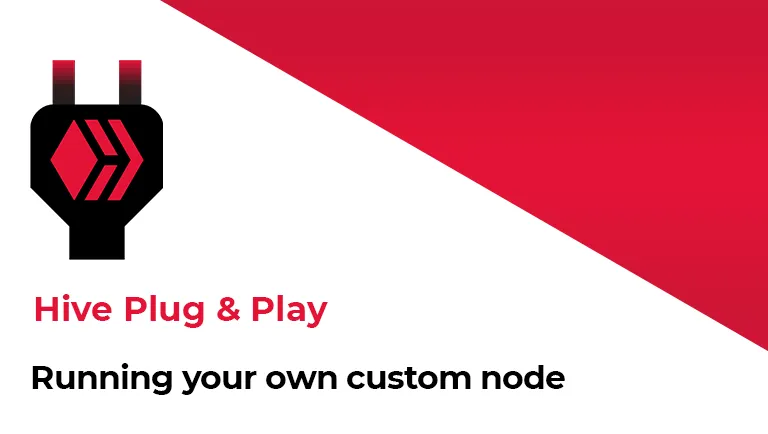
This tutorial explains how one can run a custom Hive Plug & Play node, publicly or locally. I released a stable version of Hive Plug & Play about 2 weeks ago and made a public node available at https://plug-play.imwatsi.com.
I released parts of this tutorial in the wiki: https://github.com/imwatsi/hive-plug-play/wiki/Run-your-own-node
Running a custom Hive Plug & Play node
Installation
- Clone the repo
cd hive-plug-playpip3 install .
Configuration
Hive Plug & Play looks for a config.ini file in /etc/hive-plug-play by default. To set a custom folder, use an environment variable: export PLUG_PLAY_HOME=/home/ubuntu/.config/hive-plug-play.
db_username=postgres
db_password=password
server_host=127.0.0.1
server_port=8080
ssl_cert=
ssl_key=
start_block=53877365
op_ids=["community","notify"]
Customization
- choose a
start_blockand enter it in the config as an integer. You can leave it blank to start from block1 - to filter by
op_id, enter an array of strings in the config fieldop_idsrepresenting the ones you want to allow - to make the node available to the public, set
server_hostto0.0.0.0 - to use HTTPS, set the
ssl_certandssl_keyfields to link to the respective certificate files on the machine, and finally set theserver_portto443
Run
You can run Hive Plug & Play using this command:
hive_plug_play
If you are running the node's server on port 80 or 443 you will need to run the command above with sudo privileges.
If you have any questions on running your own Hive Plug & Play node, feel free to leave a comment below.
Hive Plug & Play is a customizable block streaming and parsing microservice for custom_json ops on Hive.
Repo: https://github.com/imwatsi/hive-plug-play
Documentation: https://github.com/imwatsi/hive-plug-play/wiki